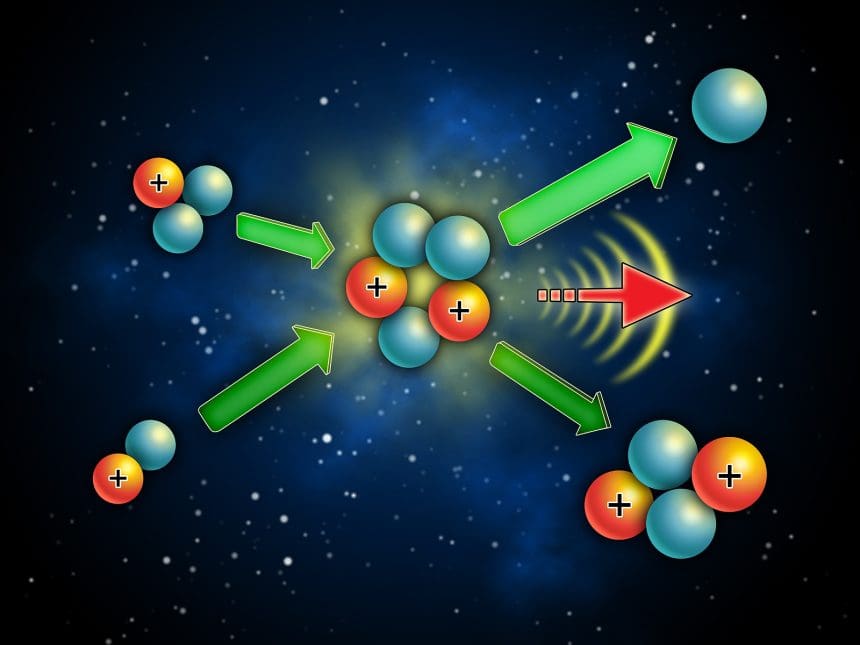Nuclear Fusion’s Rising Stars: Companies Leading the Charge Toward Clean, Limitless Energy
ST. LOUIS, MO (STL.News) Nuclear Fusion – Once the stuff of science fiction, nuclear fusion is rapidly gaining momentum as a realistic and potentially revolutionary energy solution. As global demand for clean energy surges, a growing number of private companies and forward-thinking investors are investing heavily in this next-generation power source. While fusion is not yet commercially viable, billions of dollars are being funneled into startups racing to achieve net-positive energy – and even oil and gas giants are getting involved.
This article takes a closer look at the most promising companies leading the nuclear fusion race and highlights major oil-backed ventures that aim to profit from a future powered by fusion. Please note: this is not investment advice.
What is Nuclear Fusion?
Nuclear fusion is the process that powers the sun. It involves fusing two atomic nuclei into one, releasing vast amounts of energy in the process. Unlike nuclear fission, fusion doesn’t produce long-lived radioactive waste or carry the same risk of meltdown. It also has the potential to generate nearly limitless, zero-carbon electricity using abundant fuel sources, such as hydrogen isotopes.
The challenge has consistently been achieving the conditions necessary—extreme heat and pressure—and maintaining them long enough to generate more energy than is consumed. But in recent years, breakthroughs in magnet technology, computing, and materials science have brought commercial fusion closer to reality than ever before.
Helion Energy: Nuclear Fusion’s Front-Runner
Among the most talked-about companies in the nuclear fusion space is Helion Energy, based in Everett, Washington. Helion made headlines in 2023 when it signed a first-of-its-kind power purchase agreement with Microsoft, committing to deliver fusion-generated electricity by 2028.
Backed by Sam Altman, CEO of OpenAI, Helion has raised over $600 million in funding and uses a unique approach called pulsed magnetic fusion. Rather than relying on enormous tokamaks like traditional fusion models, Helion uses a compact system that merges and compresses plasma to create fusion bursts.
Helion’s approach is efficient, modular, and scalable, with its upcoming Polaris prototype expected to reach net electricity generation in the near future. If successful, it could become the first commercial fusion power provider.
Commonwealth Nuclear Fusion Systems: Backed by MIT and Big Oil
Another leading contender is Commonwealth Fusion Systems (CFS), a private company spun out of MIT’s Plasma Science and Fusion Center. CFS is building the SPARC reactor, a compact tokamak design that uses cutting-edge high-temperature superconducting magnets to confine plasma more efficiently than traditional designs.
CFS has raised more than $2 billion from major investors, including Bill Gates, Google, and Shell—the latter being a notable oil and gas company that has shown growing interest in fusion’s long-term potential. The company plans to demonstrate net-positive energy by 2026 and build a commercial reactor, dubbed ARC, by the early 2030s.
TAE Technologies: A Long-Term Bet on Aneutronic Fusion
TAE Technologies, based in California, has been quietly working on fusion for over two decades and has raised more than $1.2 billion. Its approach is different: it uses a field-reversed configuration (FRC) with hydrogen-boron fuel, aiming to achieve aneutronic fusion—meaning no neutrons are released, and thus no radiation risk.
TAE is supported by high-profile investors, including Google, which partnered with the company to apply AI in optimizing plasma physics. Though still further from commercialization than Helion or CFS, TAE’s aneutronic fusion vision could be the ultimate clean energy solution.
General Fusion: Magnetized Target Fusion With Bezos Backing
Based in Canada, General Fusion is another top player aiming to commercialize fusion energy. The company employs a magnetized target fusion (MTF) approach, which combines magnetic confinement with mechanical compression of plasma using a spinning liquid metal sphere.
General Fusion is building a prototype demonstration plant in the UK, with plans to bring it into operation in the coming years. Its investor list includes Jeff Bezos, BDC Capital, and other notable institutions. The company believes its method is more robust and cost-effective for scalable power generation.
Zap Energy: Chevron’s Nuclear Fusion Gamble
Zap Energy, based in Seattle, is developing a compact and low-cost reactor utilizing a technique called sheared-flow-stabilized Z-pinch fusion. While this method was once dismissed as unstable, Zap claims to have solved many of the challenges, positioning itself as a disruptive force in the industry.
What makes Zap particularly interesting is the backing it received from Chevron, a major oil and gas company. Chevron’s investment in Zap Energy marks a significant shift in energy industry trends, as fossil fuel companies seek to diversify into future-facing technologies.
Chevron’s involvement underscores a broader movement by traditional energy companies to explore clean energy innovation in anticipation of long-term market shifts and regulatory changes.
Oil and Gas Giants Betting on Nuclear Fusion
Several major oil companies are investing directly or indirectly in fusion startups:
- Shell: A lead investor in Commonwealth Fusion Systems, Shell has made clear that its long-term energy strategy includes fusion and hydrogen technologies.
- Chevron: In addition to backing Zap Energy, Chevron has invested in carbon capture and other clean energy ventures.
- Equinor: The Norwegian oil major has also shown interest in advanced energy solutions, including fusion and renewables.
These companies recognize that while fossil fuels still dominate today’s energy market, a shift to low-carbon sources is inevitable, and early investment in fusion could secure them a profitable position in a post-carbon economy.
Public Companies Indirectly Tied to Nuclear Fusion
While most fusion companies remain privately held, there are ways for public investors to get indirect exposure:
- Microsoft (MSFT) – Has a power agreement with Helion Energy.
- Alphabet (GOOGL) – Invests in TAE Technologies.
- Shell (SHEL) and Chevron (CVX) – Both are back fusion startups.
- Boeing (BA) – Though not confirmed, Boeing has shown interest in aerospace-related fusion tech and advanced energy systems.
As fusion companies edge closer to commercialization, IPO rumors are growing, particularly for Helion and Commonwealth Fusion Systems. Investors should closely monitor these developments over the next few years.
The Road Ahead: Nuclear Fusion’s Multi-Trillion-Dollar Potential
While commercial fusion is not expected to scale widely before the 2030s, the potential market is enormous. According to BloombergNEF and the International Atomic Energy Agency (IAEA), fusion could eventually disrupt fossil fuels and renewables alike, offering an abundant, 24/7, carbon-free energy source with minimal land use.
Countries including the U.S., China, South Korea, and the U.K. are all funding fusion research, and public-private partnerships are helping to accelerate timelines. The fusion industry could soon become a multi-trillion-dollar sector, reshaping the global energy landscape.
Final Thoughts on Nuclear Fusion
The race to commercialize nuclear fusion is heating up, with private startups and oil majors investing heavily in what could become the defining energy technology of the 21st century. While the path to commercialization is complex and uncertain, the companies listed above are positioning themselves as potential leaders of a future powered by the sun’s very own process.
Disclaimer
This article is for informational purposes only and does not constitute investment advice. Investing in private startups or public companies involves risk; therefore, readers should conduct their research or consult with a licensed financial advisor before making any investment decisions.
© 2025 STL.News/St. Louis Media, LLC. All Rights Reserved. Content may not be republished or redistributed without express written approval. Portions of our content may be created with the assistance of AI technologies, like Gemini or ChatGPT, and are reviewed by our human editorial team. For the latest news, head to STL.News.











